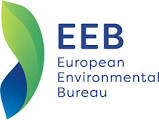Chemycal has been acquired by 3E
Learn MoreChemycal has been acquired by 3E
Learn MoreDiscover how Chemycal PRO helps you boosting your regulatory monitoring:

The European Chemicals Agency says that 10,000 to 60,000 tonnes of microplastics intentionally added to products leak into the environment yearly, are impossible to remove and last for thousands of years. The scale of the problem is dramatic: six times the size of the Great Pacific Garbage Patch, or the plastic pollution generated by 10 billion plastic bottles, the agency says. Microplastics accumulate and persist in the environment, one of the main reasons why the agency concluded it is necessary to restrict microplastic ingredients under REACH, the strictest set of chemical laws in the world.
The restriction is expected to become law across Europe by 2020. It will prevent an estimated 400,000 tonnes of plastic pollution, the agency says. NGOs welcomed the move as a significant step forward, but strongly warn that it grants unnecessary delays for most industrial sectors and excludes some biodegradable polymers. As it stands, the draft law will only restrict one sector when it comes into force, namely cleansing products made by firms that have already pledged to stop using microplastic. Other sectors will be granted 2-6 years before the law takes effect. The proposal will go to public consultation this summer followed by economic, social and risk assessments, then a vote by government experts in the secretive REACH committee not before early 2020.
Elise Vitali, chemicals policy officer for the European Environmental Bureau, said:
“The European Union is rapidly becoming a leader in the global culture shift away from wasteful plastic. Microplastic is one of those vast but largely invisible problems; a menace all around and in us. It was fed by irresponsible firms, such as those making personal care products that decided to swap out natural ingredients like ground almond, coconut shell and olive seed for plastic microbeads and ignored the public backlash and scientific warnings. We’ll be pushing hard to tighten this proposal to ensure real impact. Tackling the plastics inside products is just the tip of the iceberg when it comes to solving the microplastic blight, but is a necessary step.”
The ban is part of an EU plastic strategy that saw Europe become the first continent to start banning many types of single use plastic by 2021.
CONTINUE READING ON eeb.org
2013 © MyChemicalMonitoring. ALL Rights Reserved. About Us | Terms and Conditions